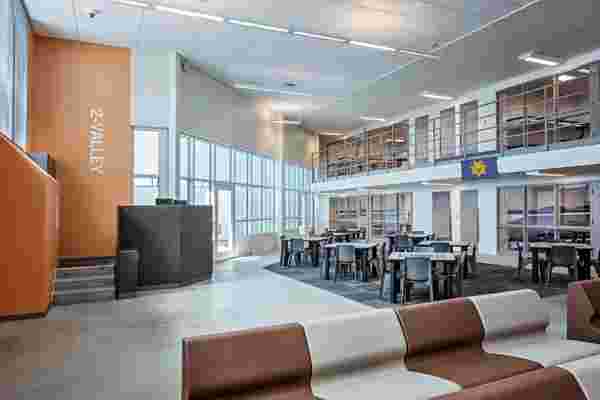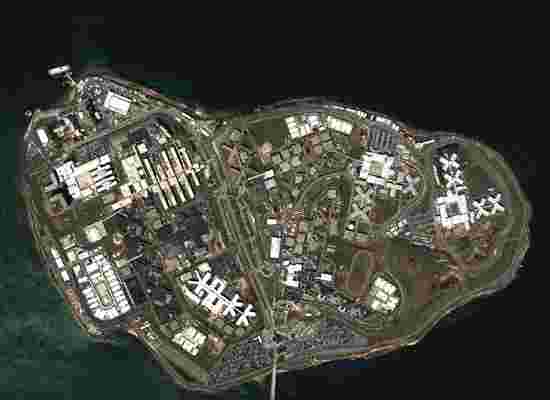October 06,2022
Can New Prison Design Help America’s Mass Incarceration Problem?
by David Stewart
Architecture and design play a pivotal role in U.S. criminal justice reform. As momentum builds to end mass incarceration, some cities and architecture firms believe that building “more humane” prisons and jails will help solve key parts of the nation’s incarceration problem. Cities such as San Diego; San Mateo, California; Birmingham, Alabama; Denver; Salt Lake City; and Nashville are investing hundreds of millions of dollars into building new correctional facilities boasting sunlight, air, greenery, and more programming space.
Earlier this year in New Orleans, a federal judge ruled that new construction on a city jail will resume, despite public outcry that the new facility will only add more prisoners and that many prisoners are mentally ill and should be treated in the community, not in jail.
Indeed, justice design, the industry segment dedicated to correctional facilities, courthouses, and police stations, has evolved since Jeremy Bentham’s 18th-century panopticon. Some architects see this is as major progress. Those in favor of sleek correctional facilities tout new infrastructure as an antidote to mass incarceration, positioning fresh design as a way to rehabilitate prisoners and reduce recidivism. But some see it as anathema, an expensive and shallow solution to the justice system’s deep-rooted harms.

Inside of the San Mateo Correctional Facility, which was completed in 2016.
The country’s largest and most costly reform effort is happening in New York City. The landmark city’s $8.16 billion plan promises to close its largest, most notorious jail, Rikers Island, by 2028 and replace it with new, borough-based jails in Manhattan, Queens, the Bronx, and Brooklyn. Despite protests over the new jails, the city announced the shortlist of design-build firms for the new Manhattan jail in October, signaling the Borough-Based Jails program will forge ahead.
“One of the main things steering this plan is that environment drives behavior,” says Jamie Torres Springer, first deputy commissioner of New York City’s Department of Design and Construction (DDC), the department heading the program. “Design is one of the ways that we’ll achieve our criminal justice goals; we don’t have to further punish through the conditions of the facilities.”
After studying the best practices of some of Europe’s most advanced jails and prisons, the DDC issued requirements for the new jail designs. Each of New York City’s four new jails must allow for movement, provide light, greenery, security, and spaces for rehabilitation, education, and visitation.
Since the ’80s, architect Frank Greene has dedicated his career to justice architecture. Greene says he’s observed a massive change in justice design over the last 10 years and believes design has the power to transform people’s lives. “We’re designing new facilities to help people return to their communities with the skills they need to succeed,” explains Greene.
But other architects challenge this notion. San Francisco–based architect Raphael Sperry is part of a growing movement of prison abolitionists who believe that America’s correctional facilities harm people more than they help. Instead of designing new jails, abolitionists want to shutter them and instead invest in alternative strategies that are restorative, not punitive. “Most incarceration is unjust. Racially, it’s totally disproportionate,” says Sperry, a firebrand in the architecture community.
In 2003, Sperry, who is president of Architects/Designers/Planners for Social Responsibility (ADPSR), launched the Prison Design Boycott for Alternatives to Incarceration. They launched a petition to the American Institute of Architects asking the trade association to end the design of spaces for execution and torture, including solitary confinement. Many architects got on board, including the late Michael Sorkin and the New York Times chief architecture critic Michael Kimmelman. The petition ran from 2012 to 2020 and culminated in victory. “We shouldn’t be designing prisons and jails. We need to be doing community reinvestment and designing jail alternatives,” Sperry says. “I think the [Borough-Based Jails program] is a mistake and a huge waste of money. New York is going to regret it.”
Last August, Sperry was asked to be part of a closed-door civic engagement class hosted by the New York chapter of American Institute of Architects. The discussion focused on New York’s Borough-Based Jails program. The organizers invited Sperry and other abolitionists and restorative justice advocates to participate; they also asked justice architects to speak. “No matter their ethical or political stance, the entire group agreed Rikers Island is inhumane and needs to close,” says AIA New York civic leader Chris Perrodin of Curtis + Ginsberg Architects, who cohosted the discussion. “But the conversation shifted to how we need to not just design nice new jails—lots of people agreed the Department of Corrections needs cultural reform.”

An aerial view of New York’s Rikers Island.
“I’ve seen the nature of justice and facility design change dramatically over the last decade,” says director of HOK’s Justice group Jeff Goodale. “What has been traditionally considered a jail, which in the distant past included bars and darker conditions that were focused on punishment, has now morphed into more what we would consider residential treatment facilities.”
Other architects believe that no matter what the new face of the correctional facility may be, the pillars of the system are control, surveillance, and punishment. Gregory Cook, a justice architect at HDR, agrees: “It’s about design, but it’s really about how they’re being operated.”
“There is widespread recognition that folks are in jail because of mental health and substance abuse,” Sperry argues. “If you really want to address those issues, the detention environment makes any treatment unsuccessful. The security environment adds unnecessary cost to the treatment program. If this is really the issue, take the money and give it to the Department of Public Health and put it in neighborhoods. This is the reasonable thing to do.”
In October 2020, AIA’s New York chapter took an unprecedented stance asking architects to stop designing correctional facilities until the justice system applies the law “without racial bias.” “We’ve been trying to understand, as architects, what can we really do,” Perrodin says. “It came home that changing the Department of Corrections’ culture has to be the mission statement at the borough-based jails.”
AIA New York’s stance against architects building correctional facilities until the justice system is corrected signifies a big moment in America. A professional group of licensed architects believe they can play a significant role by taking a stand. And as the country looks to the future with a new president, it’s crucial to listen to each other, hold accountability, and continue the discussion around justice reform. It all starts with a need to do something.






